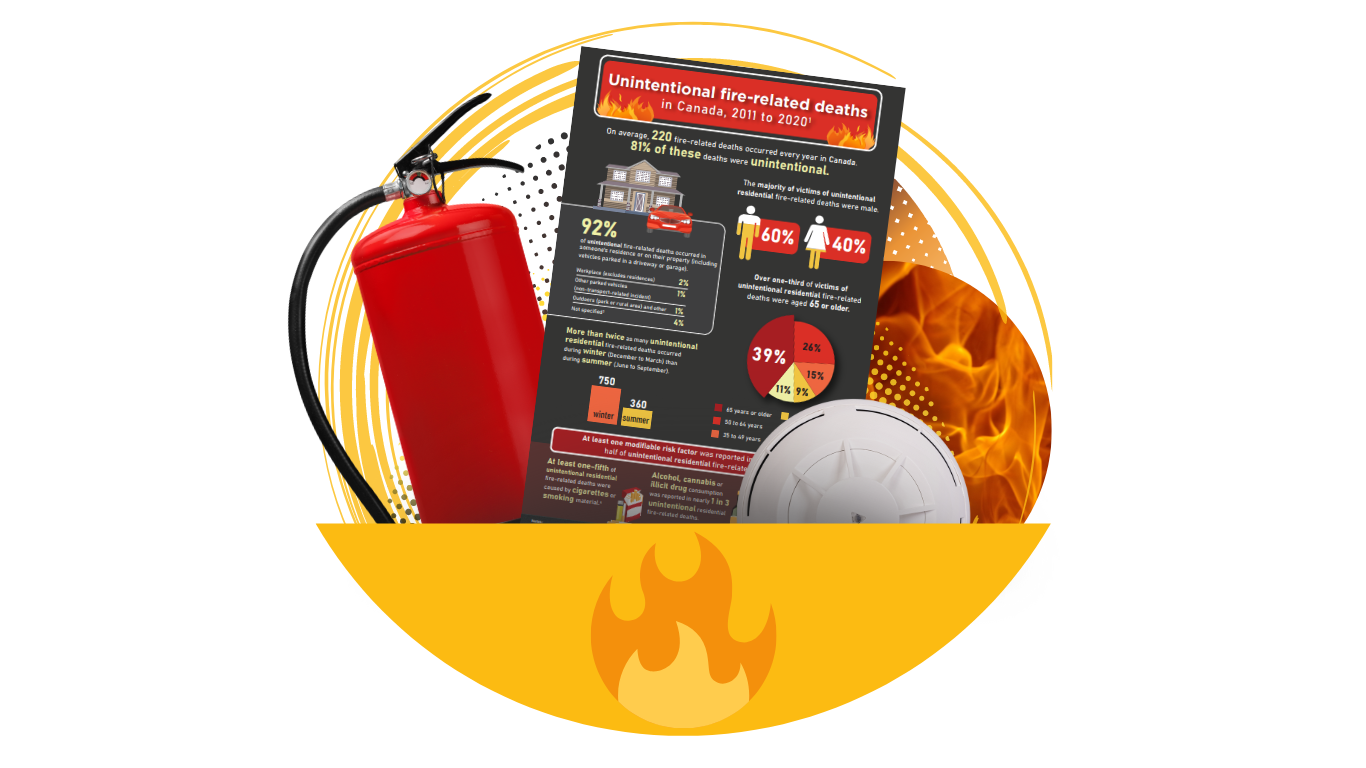
Thanksgiving weekend is upon us, and next week (October 9 to 15) is also the 100th anniversary of Fire Prevention Week in Canada.
Now is the perfect time to remind ourselves about fire safety! As the weather cools, the days get shorter, and as we spend more time indoors, we are more likely to use heat sources to keep ourselves comfortable.
This summer, the Canadian Coroner and Medical Examiner Database (CCMED)—developed at Statistics Canada in collaboration with the 13 provincial and territorial counterparts, as well as the Public Health Agency of Canada—released findings on unintentional fire-related deaths based on data from 2011 to 2020.
There were approximately 220 fire-related deaths each year during that 10-year period, and over 8 in 10 of those deaths (81%) were classified as unintentional (accidents). The remainder included intentional deaths (15%)—homicides and suicides—and another 4% of deaths were undetermined.
Residential fires (92%) accounted for the vast majority of unintentional fire-related deaths.
A significant portion of deaths at home were associated with the consumption of drugs or alcohol. The consumption of alcohol, cannabis or illicit drugs was reported in one-third of unintentional residential fire-related deaths among those aged 15 years and older.
Smoking was a hazard as well—at least one in five deaths were caused by cigarettes or other smoking materials.
Other fatal residential fires were caused by cooking, an electrical incident, or candles and other open flames.
Perhaps the most significant takeaway? Circumstances reported by coroners and medical examiners indicate that at least one modifiable risk factor—such as smoking, alcohol or drug consumption, or a non-functioning smoke alarm—was reported in about half of unintentional residential fire deaths.
Have a working smoke alarm, fire extinguisher
Smoke inhalation accounted for nearly 7 in 10 (68%) unintentional residential fire deaths from 2011 to 2020, and at least one in seven (14%) unintentional residential fire-related deaths involved no working smoke alarm. Furthermore, in 71% of such deaths, information on smoke alarms was either not specified, unknown or not applicable.
We know that minutes and seconds matter, and smoke alarms save lives.
Health Canada’s fire safety tips include choosing a smoke alarm that meets Canadian safety standards, testing it monthly, and installing one in each level of the home, including outside the bedrooms.
A certified and working fire extinguisher is also important and handy to use in case of a small fire, such as a cooking-related fire in the kitchen.
Other risk factors: living situation, age, disability
A cognitive or mobility disability could impact a person’s ability to react to and escape from a fire. These types of disabilities were present in at least 14% of unintentional residential fire-related deaths and were more common among those aged 70 years and older.
Living alone is also a risk factor, especially in the fall and winter months with the increased risk of fires at home. Let’s remember to check in on our family, friends and neighbours who may be especially vulnerable.

Like this article? You might also like:

Contact information
For more information, contact the Statistical Information Service (toll-free 1-800-263-1136; 514-283-8300; infostats@statcan.gc.ca) or Media Relations (statcan.mediahotline-ligneinfomedias.statcan@statcan.gc.ca).
